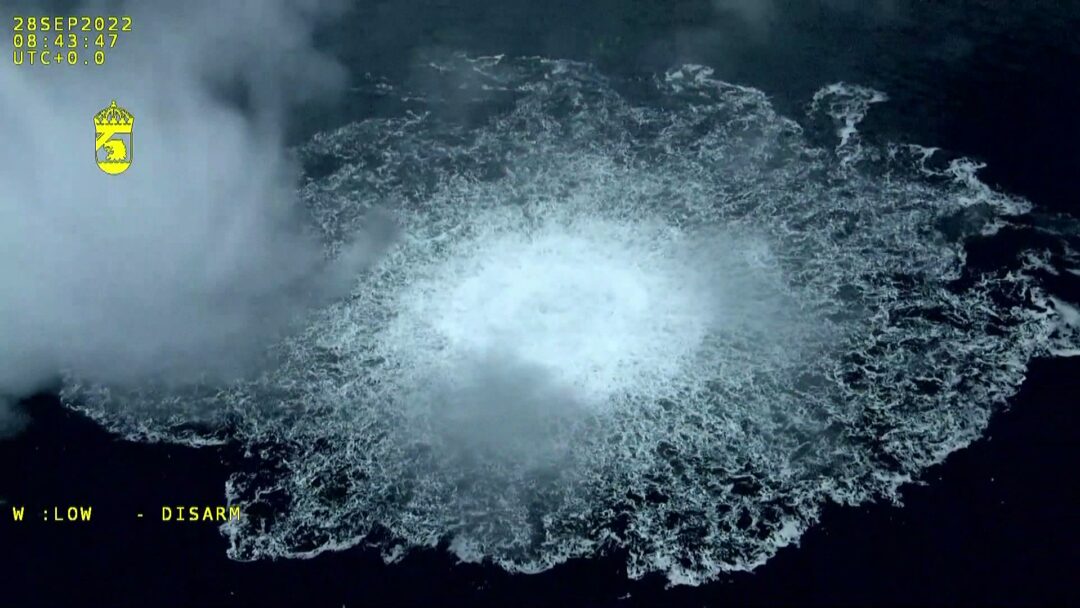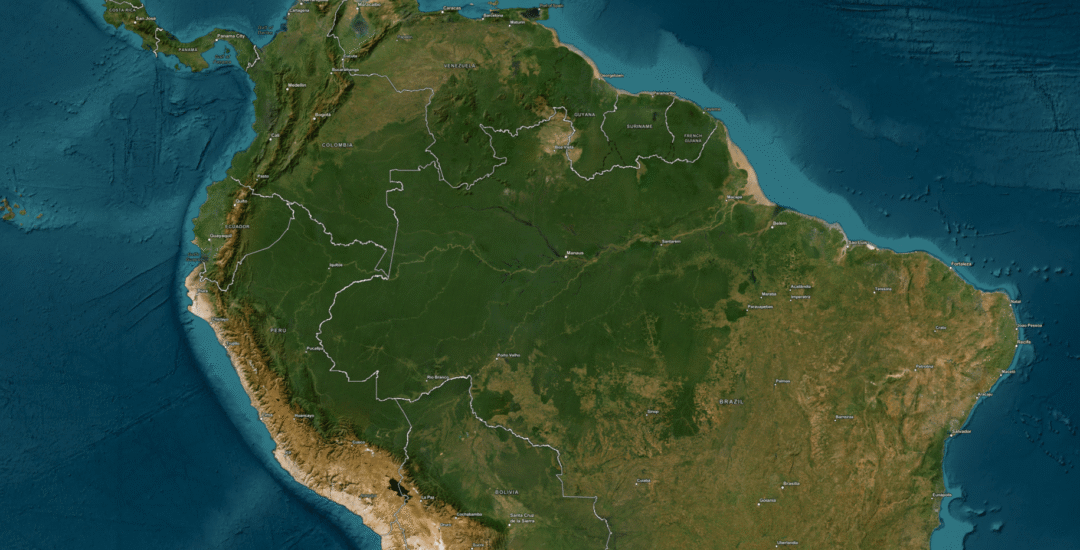
Economic Analysis
In the past decade many countries in South America have experienced sustained economic growth. Following the global economic slowdown after the Covid pandemic in 2020, these South American nations have sought to diversify their economies, opening up new markets and prioritising growth. Instability in the region can still hinder this growth, with spikes in regional crime levels often being a key factor in any economic slowdown.
For any business or organisation seeking to understand the best location in the region for investment, Roke’s Crucible platform provides up to date economic analysis of countries. Easily accessible, users can identify trends and find the best location for investment in areas such as commodities.
Image 1: Crucible Screenshot displaying the countries of Peru and Ecuador.
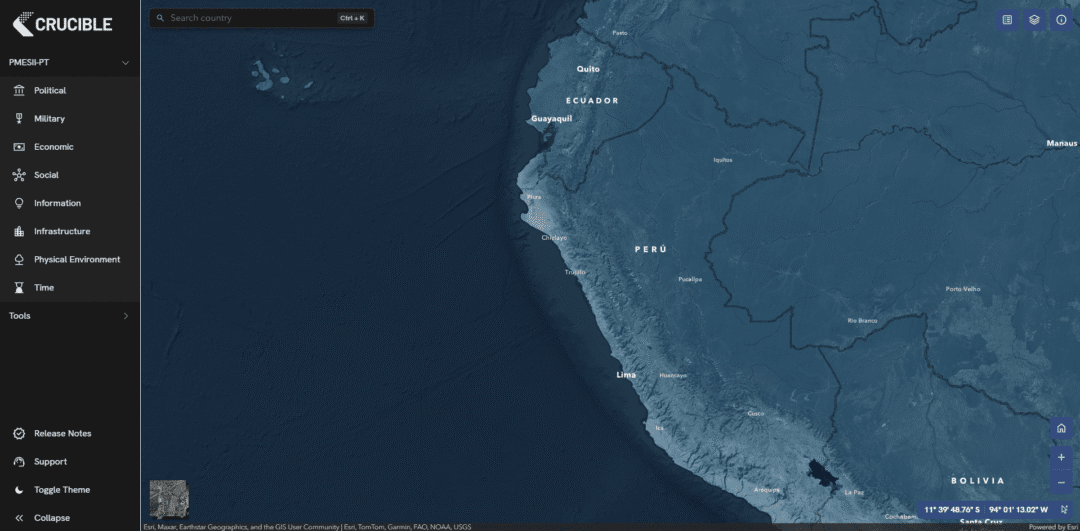
For a business seeking to invest in either Peru or Ecuador, Crucible can be used to understand a variety of factors that showcase the advantages and disadvantages of both nations. At a surface level, the economy of both Peru and Ecuador seem similar. Breaking both nation’s GDP by sector, there is a similar spread of sectors, with services providing the overwhelming majority of GDP for both countries. Peru has a larger industrial sector at 34 % of total GDP, compared to Ecuador’s 27%. Both nations have around 7% of their GDP associated with the agricultural sector. This expansion of both industrial and service sectors is one of the signs of the growth of both nations.
Image 2: Crucible screenshot displaying the breakdown of GDP by sector for both Peru and Ecuador.
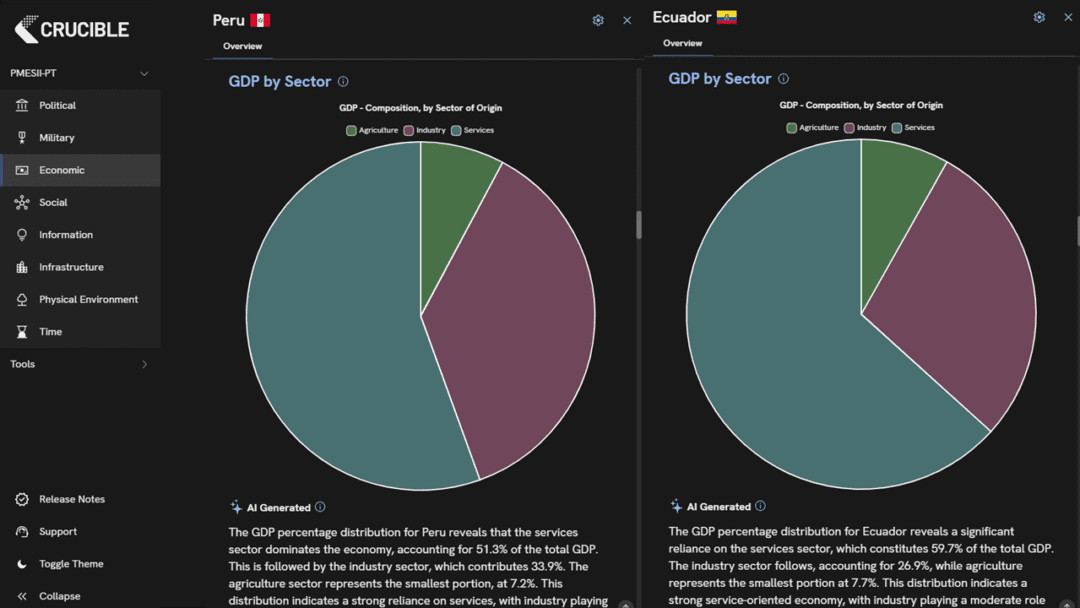
One nation which has struggled more economically is the small South American nation of Guyana. Looking at the spread of each sectors contribution to overall GDP, there is a much lower percentage from the services economy. Instead, almost 68% of Guyana’s economy is from industry. This reliance on industry is likely to impact Guyana’s ability to shift and adapt to market changes, compared to Peru and Ecuador which have a much more balanced economic split.
Image 3: Crucible screenshot displaying the breakdown of GPD by sector for Guyana.
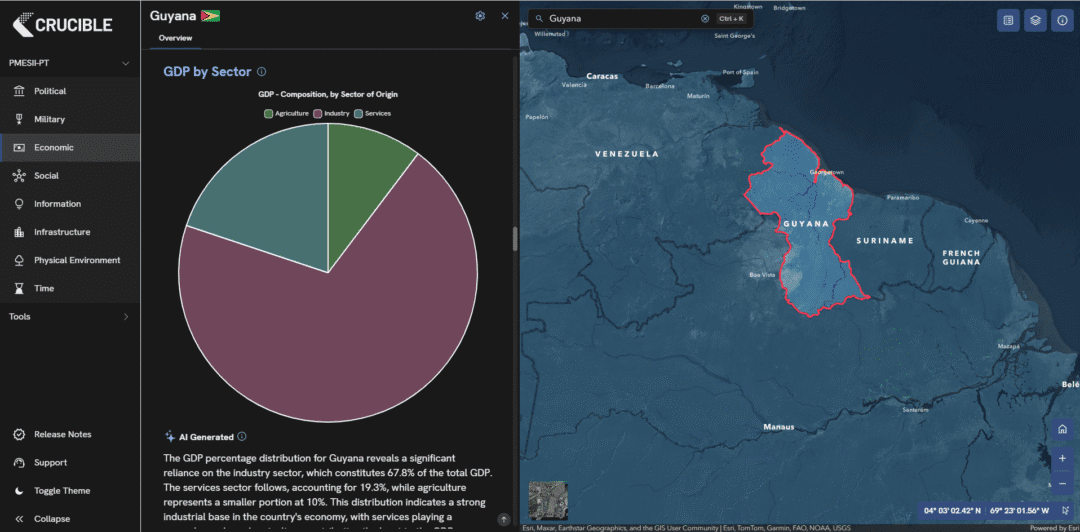
Examining further into Guyana’s economic data, we can see that a significant degree of poverty is still prevalent in the country. Approximately 28% of population is living on less than $6.85 a day. A further 12% live on less than $3.65, and an additional 6% live on less than $2.15 (this is classed as the international poverty line).
Image 4: Crucible Screenshot displaying the breakdown of population living below the poverty line in Guyana
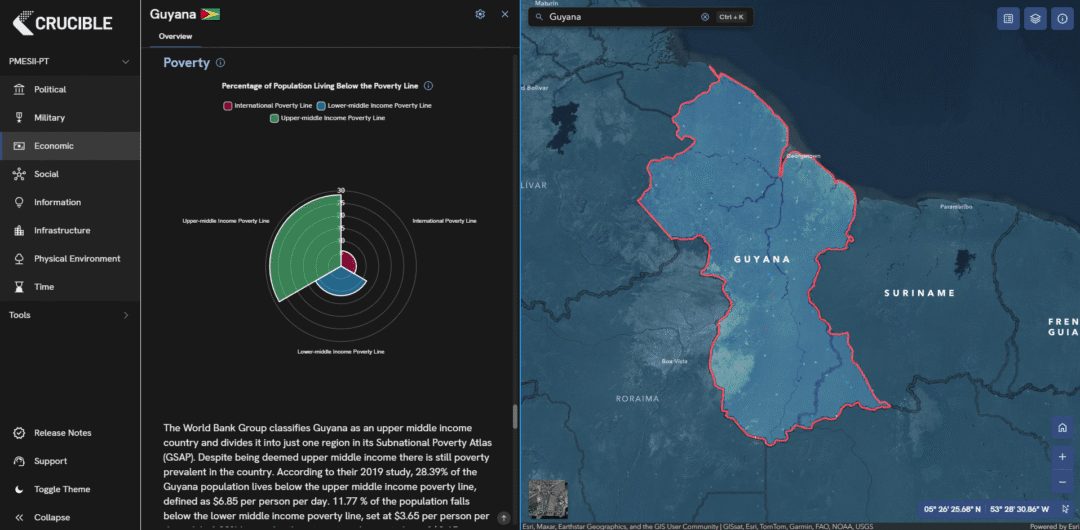
In comparison, both Peru and Ecuador have just over 3% of their populations on the international poverty line, half the percentage amount of Guyana. Further economic comparison tools, such as unemployment rates, government net lending/borrowing and inflation rates are all available within the Crucible platform. For a business seeking to invest in a new area of operations, Crucible can provide an easy to use platform, designed to enable rapid business decisions in a rapidly evolving world.



